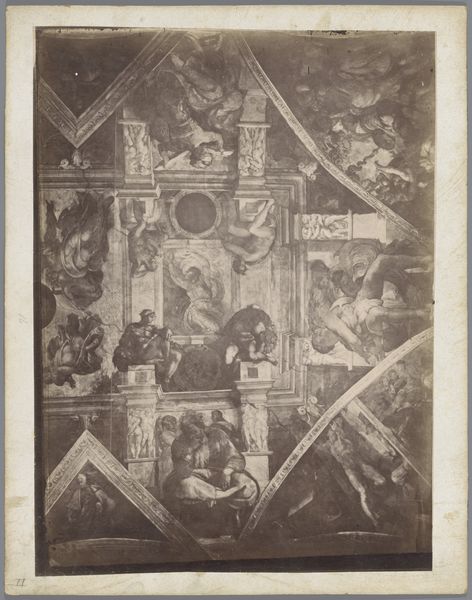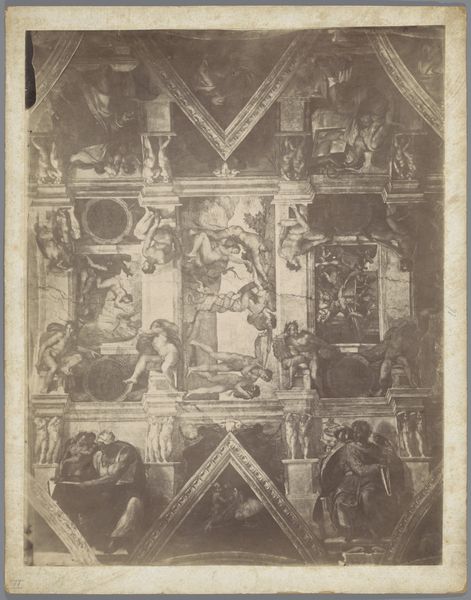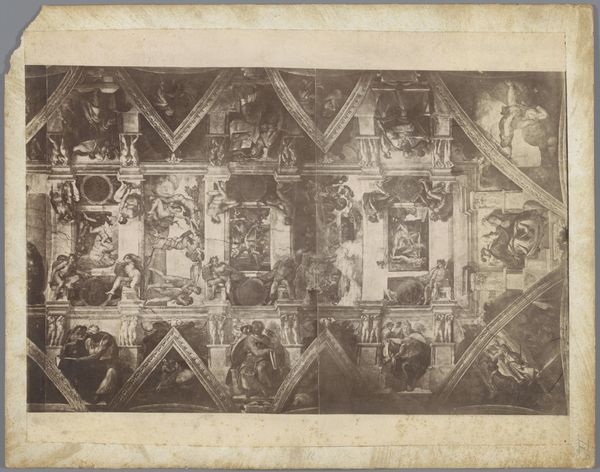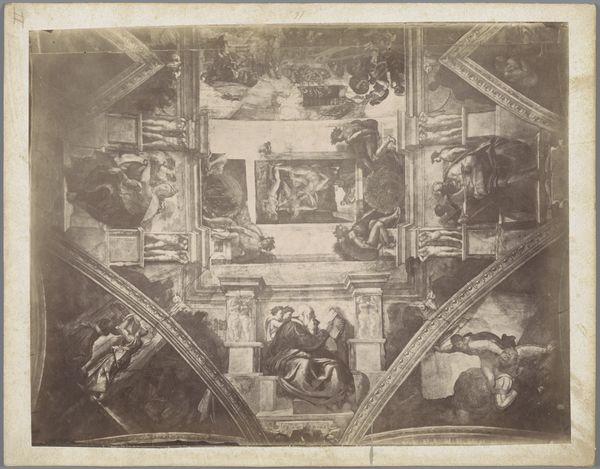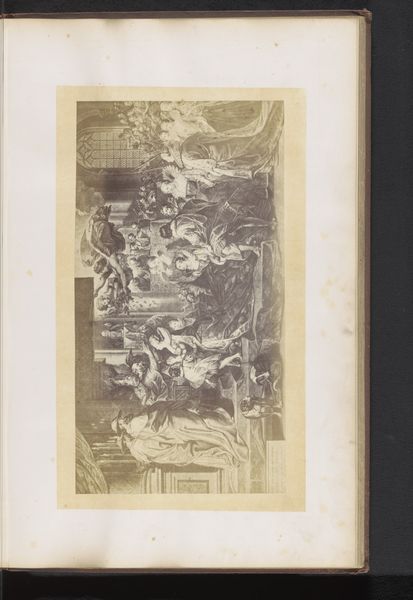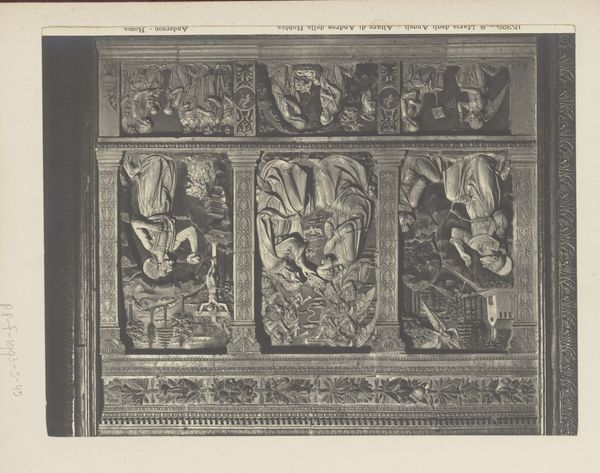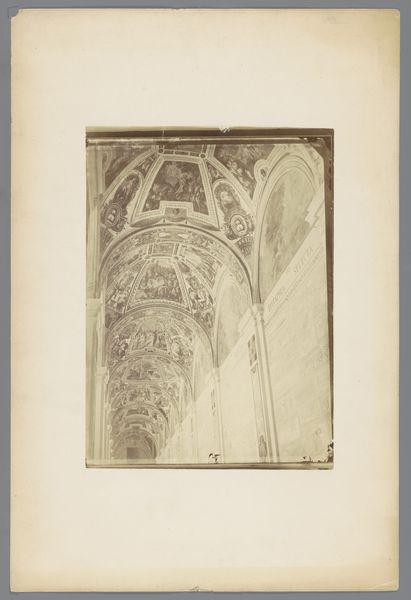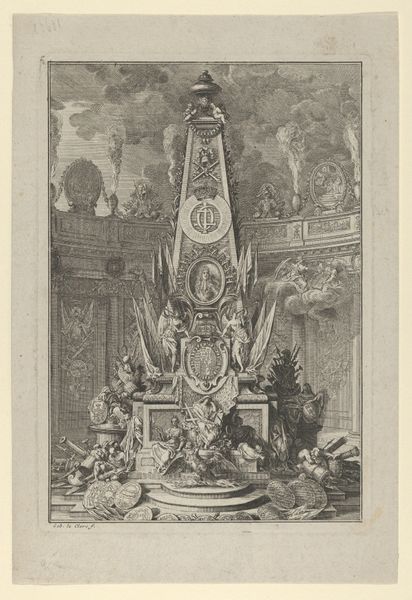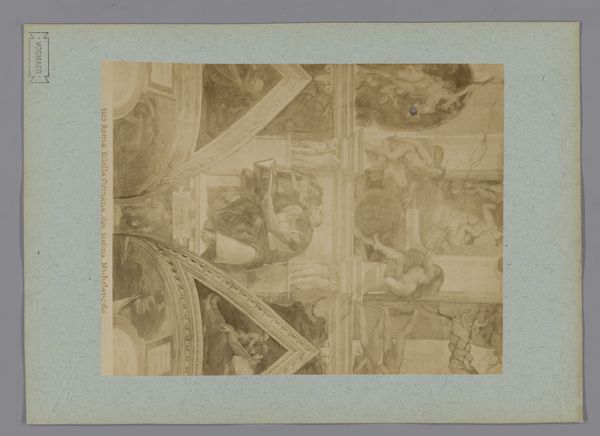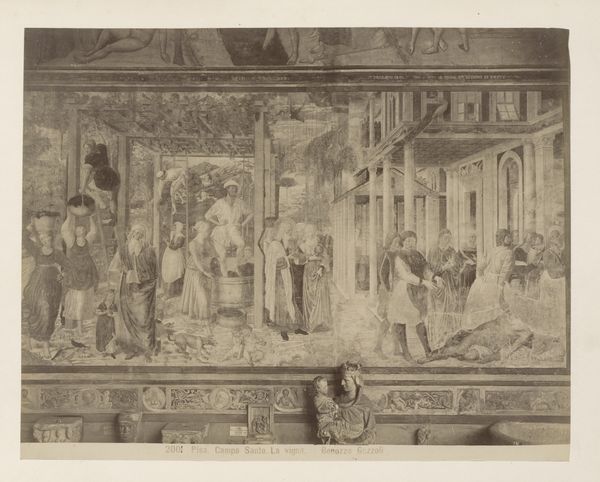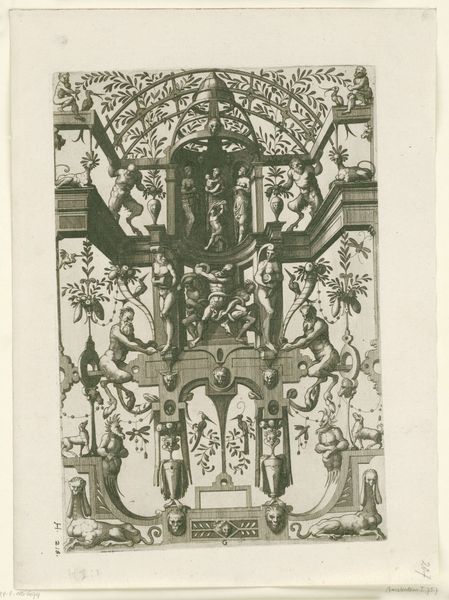
Fotoreproductie van de fresco's op het plafond van de Sixtijnse Kapel te Vaticaanstad door Michelangelo, voorstellende de Schepping c. 1875 - 1900
0:00
0:00
anonymous
Rijksmuseum
fresco, photography, gelatin-silver-print
#
portrait
#
muted colour palette
#
fresco
#
11_renaissance
#
photography
#
gelatin-silver-print
#
history-painting
#
italian-renaissance
#
watercolor
Dimensions: height 302 mm, width 405 mm
Copyright: Rijks Museum: Open Domain
Curator: This gelatin silver print presents a photographic reproduction of Michelangelo’s Sistine Chapel ceiling frescoes. It was created sometime between 1875 and 1900. The original fresco cycle, of course, resides within Vatican City. Editor: It's incredible to see such an iconic piece rendered in this monochromatic way. The limited tonal range emphasizes the monumentality of the figures, and the geometry of the architectural framework becomes even more pronounced. Curator: Indeed, the photograph serves as a fascinating document of cultural dissemination. By the late 19th century, advances in photographic technology allowed for the widespread reproduction and distribution of major artworks. These images brought masterpieces like the Sistine Chapel ceiling to a broader public audience who might never have the chance to see the original. Editor: It raises questions about access and representation. While a photograph democratizes viewing in some ways, it also flattens the experience, doesn’t it? Consider the context removed—the scale, the devotional purpose. It turns this profound declaration of faith and human potential into something commodifiable. How did that change people’s relationship to religion? Curator: That’s a compelling point. The act of photographic reproduction transforms a religious icon into a cultural commodity, altering its inherent function and spiritual value within the larger framework of religious institutions. It speaks volumes about the shifting dynamics between the church and popular culture during this period. The photographic representation itself becomes a political object. Editor: Absolutely. And what about the labor? Michelangelo labored for years on that ceiling, strained his body to create that upward gaze towards creation, whereas here it's just printed in bulk. What are we losing, and what are we gaining with that loss? It's crucial to examine these power structures inherent in representation. Curator: Considering these historical and artistic interpretations encourages a deeper exploration of art’s evolving role in society. Editor: I agree, especially how the intersection of art and faith have broader, perhaps uncomfortable impacts on modern conceptions of art itself.
Comments
No comments
Be the first to comment and join the conversation on the ultimate creative platform.
